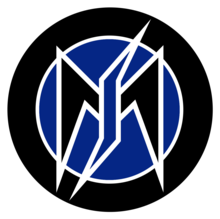
The Blue-and-Blacks (Sinimustat) was a fascist youth organization that operated in Finland from 1930 to 1936, initially affiliated with the Lapua Movement and then the Patriotic People's Movement (IKL). [1]

The Blue-and-Blacks (Sinimustat) was a fascist youth organization that operated in Finland from 1930 to 1936, initially affiliated with the Lapua Movement and then the Patriotic People's Movement (IKL). [1]
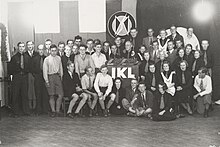
The Blue-and-Blacks was founded in the winter of 1930–1931, when the students of Lapua Co-educational School founded the Blue-and-Blacks Club in their school, inspired by the ideas of the Lapua Movement. Its first chairman was Aulis Ojajärvi and its secretary was Jouko Sinisalo. The Blue-and-Blacks serve as the youth organization of the Lapua Movement. The organization had no contacts with the student unions and did not take a position on the language issue. [1]
The Lapua Movement. ceased operations in the winter of 1932 and the need for a youth organization was soon recognized in IKL, and a ready-made organization for it existed. In January 1933, Blue-and-Blacks became affiliated with the IKL. At that time, the central management of the organization moved to Helsinki and was headed by Pastor Elias Simojoki.
The Blue-and-Blacks and IKL had no official relationship. However, the local director of IKL had to be consulted when electing the head of the local Blue-and-Blacks chapter, and both organizations were headed by the same people, incl. two IKL MPs, Simojoki and Reino Ala-Kulju.
According to the rules of the fall of 1933, the Blue-and-Blacks could be joined by any girl or boy who turned 10 years old. All Blue-and-Blacks wore a uniform organizational suit, a black blouse, and a blue tie. The blacks also used the Roman salute. [3] Every 17-year-old Blue-and-Blacks could join IKL's local branch. The purpose of the organization was to create Greater Finland. In order to achieve this, measures had to be taken to awaken and strengthen the patriotic and Finnish national spirit among Finnish youth. The ideology was especially influenced by the Academic Karelia Society. According to the fascist Ajan Suunta magazine: "Greater Finland, whose border is far away and the people strong - that is the brave goal of the Blue-and-Blacks." In all their activities, the Blue-and-Blacks had to observe Christian moral discipline and order. [1]
Each Blue-and-black was strictly ordered to join the White Guard or its boys organisation to practice military discipline. The young people were also ordered to become familiar with march music and ideological literature. Compulsory marching songs had to be learned like "Luo Lippujen" before taking the oath. Recommended literature included the poetry of Aarno Karimo, the works of Sulo-Veikko Pekkola, the historical research of J. O. Hannula, the military memoirs of Paavo Talvela and biographies of Mussolini and Horst Wessel.
The new youth organization immediately gained great popularity among school youth. There were seventy Blue-and-Blacks chapters in operation in 1935. There were about 5,500 members who took the oath, but according to Simojoki, its ideas were supported by tens of thousands of young people. The school board, for its part, banned organization uniforms even before the school began in the fall of 1933. [1]
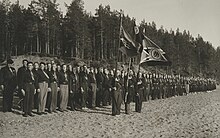
The Blue-and-Blacks spirit was created by large summer camps held in 1933 in Vanaja and in 1934 and 1935 in Kuortane. Participants slept in military tents, sang, swam, listened to presentations and discussed. The Blue-and-Blacks camps were also met with fierce resistance. Ilkka of the Agrarian League wrote that the Blue-and-Blacks camps trained to take part in armed struggle: "for a certain party's ultimate plan for power". In 1934, Blue-and-Blacks magazine was founded as the organ of the Blue-and-Blacks organization. The Blue-and-Blacks also had high-level cultural activities, including the Blue-and-Blacks recitation choir, the best known of which was the one led by Pekka Kuusi known as "Echo of Merja". Cultural relations were maintained, especially with the German Hitler-Jugend. The Blue-and-Blacks took influences from other youth organizations both at home and abroad, such as the German Nazis and Italian fascists. [5]
Members of the organization often behaved fanatically, even in legal gray area. In 1935, the Blue-and-Blacks detonated a homemade tear gas bomb at Vallila's workers' house, and in July the peace meeting in Balder Hall was disrupted by throwing a stink bomb at the audience. In 1935, Blue-and-Blacks took part in street battles against "Hurris" on Swedish Day.
The doom of the organisation was getting tangled in the power struggle in Estonia. The Finns - including Simojoki - helped Artur Sirk, the leader of the Estonian freedom fighter movement, Vaps, who had been sentenced to prison, to escape. Sirk received a residence permit in Finland and was assigned to Lohja. There he was visited by several people close to the Blue-and-Blacks movement. The idea arose to oust the President of Estonia Konstantin Päts. Funds were sought from Estonia to acquire weapons for the Vaps. The coup was to take place in early December 1935. However, the plan dried up when the Estonian authorities got a hint of the plan and arrested the planners on 8 December. At the same time, material was found that proved that the Blue-and-Blacks were involved in the plan. In home searches near Simojoki, the so-called Heinäsaari letter to Jaakko Virkkunen, in which Simojoki talked about sending the Minister of Justice, "“Sasu”, “Eero” and other reptiles to a concentration camp in Heinäsaari in Petsamo". On January 23, 1936, the Ministry of the Interior banned the activities of the Blue-and-Blacks. [1]
The activities of the blacks were resumed immediately under a new name. IKL's new youth organisation was the "Blackshirts", which published its own magazine "Luo Lippujen", edited by Viljo Lius. The same people came to lead the organization as before: Simojoki, Reino Ala-Kulju, Anna-Liisa Heikinheimo, etc. However, the Academic Karelia Society was announced as the organizer of the summer camp activities. In the summer of 1938, blackshirt camps were already held in six locations. Blackshirts continued to operate until 1939. At that time, no more summer camps were organized, but all the grown-up black shirts were in fortification work on the Isthmus organized by AKS. [1]
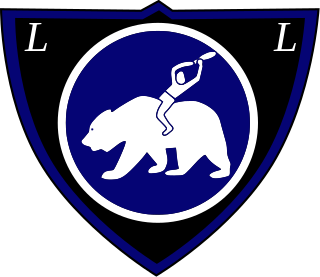
The Lapua Movement was a radical Finnish nationalist, fascist, pro-German and anti-communist political movement founded in and named after the town of Lapua. Led by Vihtori Kosola, it turned towards far-right politics after its founding and was banned after a failed coup d'etat attempt in 1932. The movement's anti-communist activities continued in the parliamentarian Patriotic People's Movement.
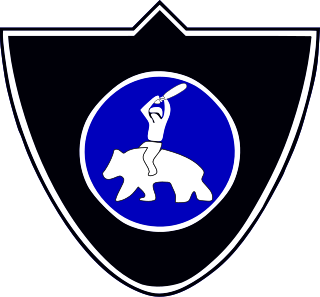
Patriotic People's Movement was a Finnish nationalist and anti-communist political party. IKL was the successor of the previously banned Lapua Movement. It existed from 1932 to 1944 and had an ideology similar to its predecessor, except that IKL participated in elections with limited success.

Iisakki Vihtori Kosola was a Finnish politician, activist and a farmer who served as the leader of the far-right and anti-communist Lapua Movement political party, and later as the leader of the Patriotic People's Movement political party in Finland.
A number of political movements have involved their members wearing uniforms, typically as a way of showing their identity in marches and demonstrations. The wearing of political uniforms has tended to be associated with radical political beliefs, typically at the far-right or far-left of politics, and can be used to imply a paramilitary type of organization.

The Vaps Movement was an Estonian political organization. Founded in 1929, it emerged as a mass anti-communist and populist movement from the Union of Participants in the Estonian War of Independence, an association of veterans of the Estonian War of Independence (1918–1920). The leaders of this association were Andres Larka and Artur Sirk.

Lauri Elias Simojoki was a Finnish clergyman who became a leading figure in the country's far right movement.

Herman Gregorius Gummerus was a leading Finnish classical scholar, diplomat, and one of the founders of the Patriotic People's Movement (IKL).

Erkki Aleksanteri Räikkönen was a Finnish nationalist leader.

Artur Sirk was an Estonian political and military figure. A veteran of the country's struggle for independence, Sirk later became a leading figure within the right-wing Vaps Movement and an outspoken opponent of the government.

Vilho Annala was a Finnish civil servant, economist and far right politician.

Vilho Veikko Päiviö Helanen was a Finnish civil servant and politician.

Reino Ala-Kulju was a Finnish Lutheran clergyman, secondary school teacher and politician, born in Kuortane. He was a member of the Parliament of Finland, representing the Patriotic People's Movement (IKL) from 1933 to 1939 and the National Coalition Party from 1952 to 1954 and from 1959 to 1966. Eveliina Ala-Kulju was his mother.
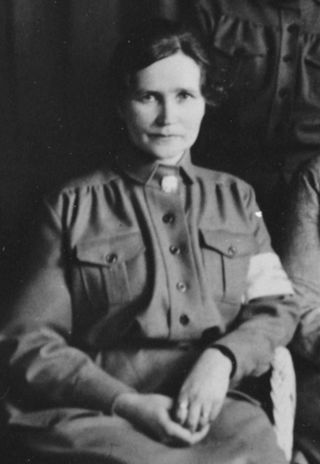
Hilja Elisabet Riipinen was a Finnish politician involved with the nationalist and anti-communist Lapua Movement and Patriotic People's Movement (IKL). She was a member of parliament between 1930 and 1939, first elected from the electoral list of the National Coalition Party, but she defected to the Patriotic People's Movement after it was formed as a political party in 1933.

The Patriotic People's Movement was a political organization in Finland. It regarded itself as the successor of the original Patriotic People's Movement that had operated in the interwar years until the end of the Continuation War. After a few active years and moderate success fighting for the legacy of the bankrupt populist Finnish Rural Party, IKL failed to be admitted to the party register and its activities died out after 1998.

In Finland, the far right was strongest in 1920–1940 when the Academic Karelia Society, Lapua Movement, Patriotic People's Movement (IKL) and Vientirauha operated in the country and had hundreds of thousands of members. In addition to these dominant far-right and fascist organizations, smaller Nazi parties operated as well.

Martti Aleksander Pihkala was a National Coalition Party MP who became known as a Jäger activist, Ostrobothnia White Guard founder, in the 1920s and 1930s, leader of the strikebreaking organisation Vientirauha, also known as "Pihkala's Guard" and an influencer of the Lapua movement and the Patriotic People's Movement.

The Blue-and-Black Movement is a neo-fascist de-registered political party in Finland.
For Independence was a right-wing political organization operating in Finland in the 1970s and 1980s, which opposed the influence of the Soviet Union in Finland, the policy of President Urho Kekkonen and socialism.
Front Soldier League was a Finnish civil war White Guard veteran organization between the years 1929 and 1944, which also had extreme right-wing political objectives. In the early 1930s, it had close links with the Lapua movement, in which the leaders of the League played an important role. The Front Soldier League was abolished in 1944 on the basis of the Moscow peace treaty, which forbade fascist organizations. It had a sister organization for women, the Front Soldier Women's League, which was also disbanded.
Arvo Kalevi Heikkinen was a Finnish member of the Lapua movement, known for his involvement in the murder of Yrjö Holm, a municipal councilor from Forssa, in 1930. Later, he fought in the Spanish Civil War on the side of the fascists led by General Francisco Franco. The detective who interrogated Heikki regarding Holm's murder characterized him as an "ideological fanatic".